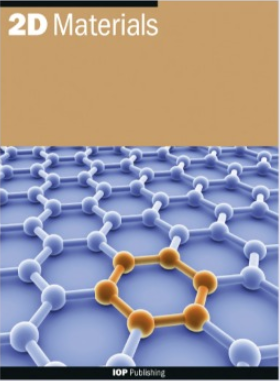通过统计发现揭示铁基超导体中的内在涡核状态
IF 4.5
3区 材料科学
Q2 MATERIALS SCIENCE, MULTIDISCIPLINARY
引用次数: 0
摘要
在 II 型超导体中,磁涡旋内的电子状态蕴含着有关平分机制的重要信息,并能揭示非难拓扑结构。虽然扫描隧道显微镜/光谱学(STM/S)是超导漩涡成像的强大工具,但要将其内在电子特性与次表面缺陷和紊乱等外在效应分离开来却很有挑战性。在这里,我们将 STM/STS 与基本的机器学习相结合,开发出一种方法,用于筛选出铁基超导体中由嵌入式紊乱钉住的涡旋。通过对涡旋内的 STS 大数据进行主成分分析,我们发现 Ba(Fe0.96Ni0.04)2As2 中的涡旋核心态在特定磁场强度下开始分成两类,分别反映了有和没有被次表面缺陷或紊乱钉住的涡旋。我们的机器学习分析提供了一种无偏的方法来揭示新型超导体中的内在涡核态,并揭示了马约拉纳零模可能出现的谜题。本文章由计算机程序翻译,如有差异,请以英文原文为准。
Towards revealing intrinsic vortex-core states in Fe-based superconductors through statistical discovery
In type-II superconductors, electronic states within magnetic vortices hold crucial information about the paring mechanism and can reveal non-trivial topology. While scanning tunneling microscopy/spectroscopy (STM/S) is a powerful tool for imaging superconducting vortices, it is challenging to isolate the intrinsic electronic properties from extrinsic effects like subsurface defects and disorders. Here we combine STM/STS with basic machine learning to develop a method for screening out the vortices pinned by embedded disorder in iron-based superconductors. Through a principal component analysis of large STS data within vortices, we find that the vortex-core states in Ba(Fe0.96Ni0.04)2As2 start to split into two categories at certain magnetic field strengths, reflecting vortices with and without pinning by subsurface defects or disorders. Our machine-learning analysis provides an unbiased approach to reveal intrinsic vortex-core states in novel superconductors and shed light on ongoing puzzles in the possible emergence of a Majorana zero mode.
求助全文
通过发布文献求助,成功后即可免费获取论文全文。
去求助
来源期刊

2D Materials
MATERIALS SCIENCE, MULTIDISCIPLINARY-
CiteScore
10.70
自引率
5.50%
发文量
138
审稿时长
1.5 months
期刊介绍:
2D Materials is a multidisciplinary, electronic-only journal devoted to publishing fundamental and applied research of the highest quality and impact covering all aspects of graphene and related two-dimensional materials.
 求助内容:
求助内容: 应助结果提醒方式:
应助结果提醒方式:


